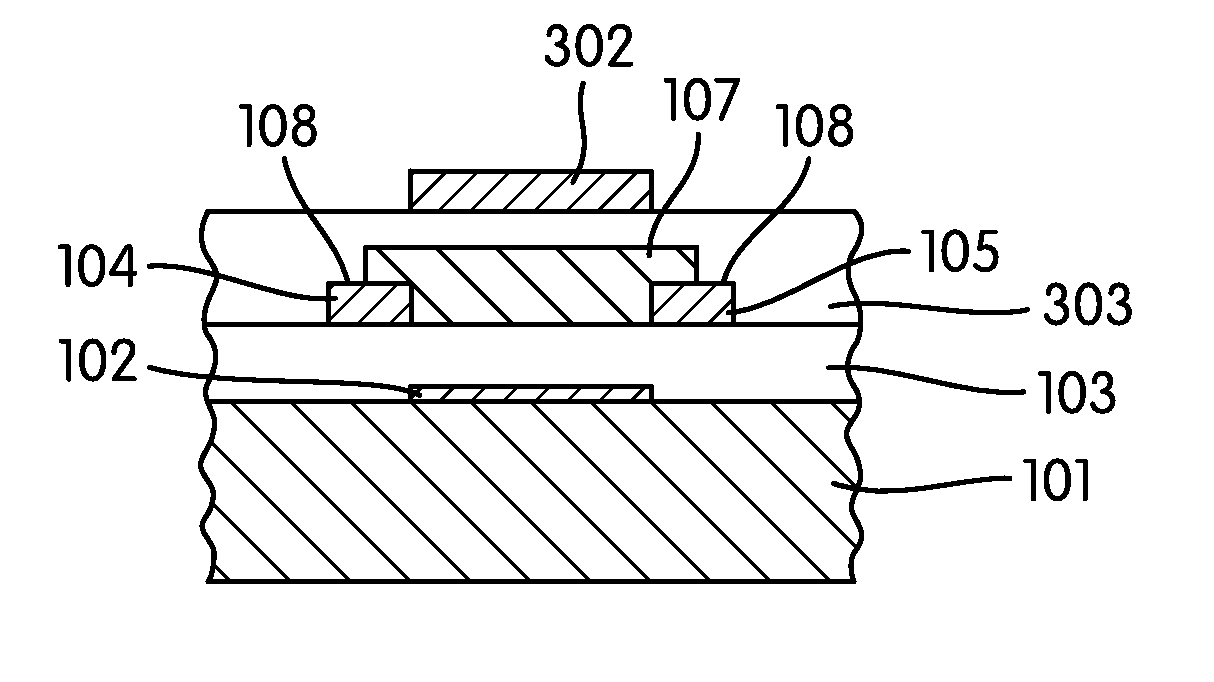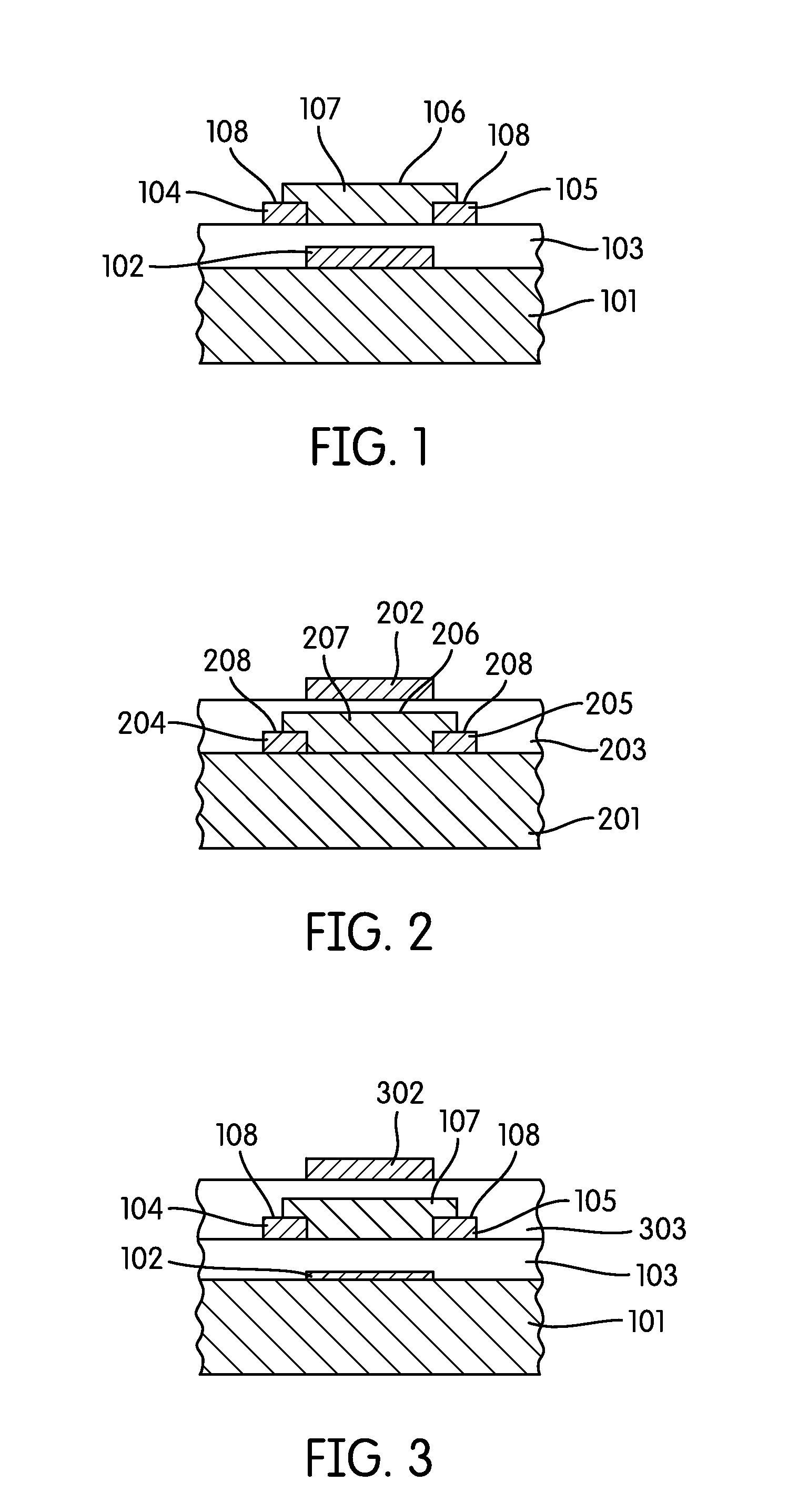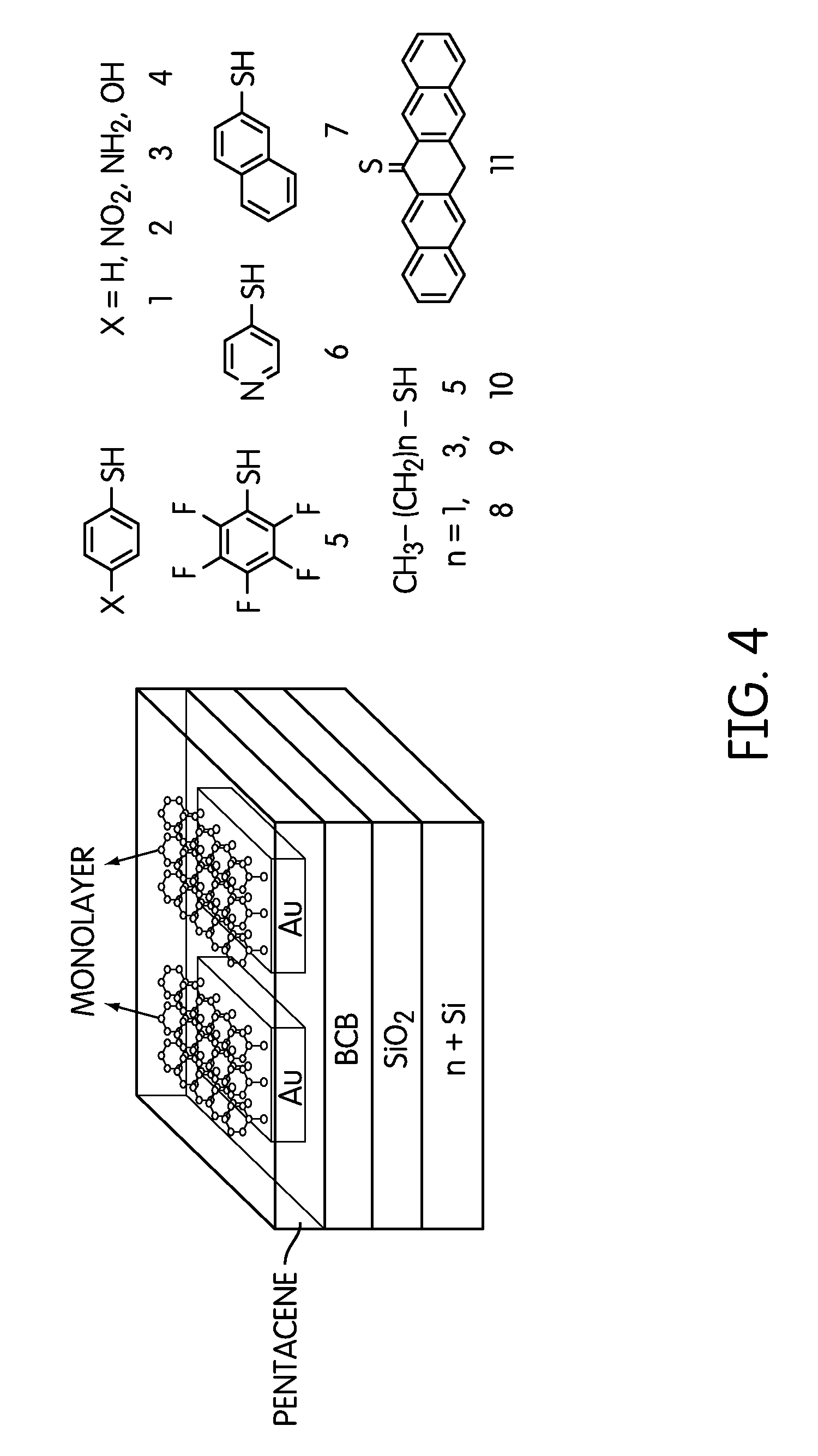Organic semiconductors capable of ambipolar transport
a technology of organic semiconductors and ambipolar transport, which is applied in the direction of transistors, solid-state devices, thermoelectric devices, etc., can solve the problems of poor stability of low work function electrodes and low mobility of materials, and achieve the effect of improving transport and easy integration
- Summary
- Abstract
- Description
- Claims
- Application Information
AI Technical Summary
Benefits of technology
Problems solved by technology
Method used
Image
Examples
examples
[0038]Pentacene FETs were fabricated in bottom contact geometry, as illustrated in FIG. 4. N-type Si wafers (ρ2 served as the back gate and part of the gate-dielectric stack of the FETs, respectively. The substrates were transferred into a N2-glove box where all the device fabrication and characterization was performed. The wafers were cleaned by UV-ozone for 20 min. A 1:3 solution of BCB:mesitylene was filtered (0.2 μm polytetrafluoroethylene (PTFE) syringe filter), deposited by spin-coating at 3000 rpm for 30 s, and annealed at 265° C. for 30 s, providing a BCB (benzocyclobutene) layer about 130 nm thick. The measured capacitance of the SiO2 (250 nm) / BCB (˜130 nm) gate dielectric stack was 7.6(±0.25) nF / cm2. Au source and drain electrodes (15-20 nm in thickness) were thermally evaporated through a shadow mask to define channel lengths (L) ranging from 30-200 μm and widths (W) to provide W / L of 15 for each device.
[0039]Benzenethiol (1), 4-nitrobenzenethiol (2), 4-aminobenzenethiol ...
PUM
 Login to View More
Login to View More Abstract
Description
Claims
Application Information
 Login to View More
Login to View More - R&D
- Intellectual Property
- Life Sciences
- Materials
- Tech Scout
- Unparalleled Data Quality
- Higher Quality Content
- 60% Fewer Hallucinations
Browse by: Latest US Patents, China's latest patents, Technical Efficacy Thesaurus, Application Domain, Technology Topic, Popular Technical Reports.
© 2025 PatSnap. All rights reserved.Legal|Privacy policy|Modern Slavery Act Transparency Statement|Sitemap|About US| Contact US: help@patsnap.com



